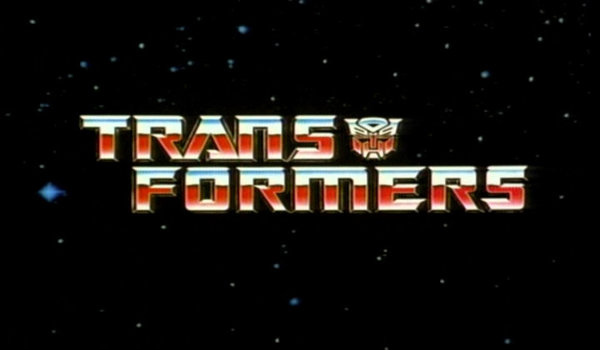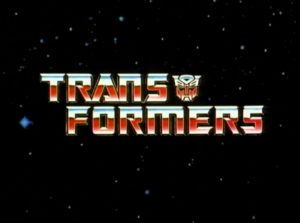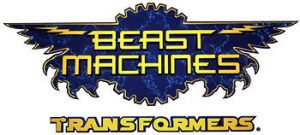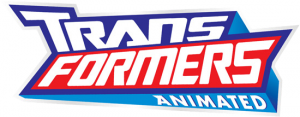So, the Transformers film franchise is making plans to reinvent itself into a cinematic universe in a style that is similar to what Star Wars is following – a main film and then a spin-off. Transformers: The Last Knight looks to introduce new elements of the franchise such as Hot Rod, the Quintessons, and possibly Unicron, as well as answering certain questions as to why the Transformers are so influential on Earth’s culture and history. In anticipation of the films’ ambitious new plans, let’s take a look back at what will be their future source of storytelling, the animated series.
Each of the cartoons have had alternating degrees of quality and added something new to the franchise, be it new characters or world building. Originally there was the “G1” continuity (Generation One) which consisted of the classic 1980s series, the tie-in movie, and eventually, the “Beast Era” which was the big thing in the 1990s. Afterwards came the Robots in Disguise brand that no one really remembers, then the god-awful “Unicron Trilogy”, the wonderfully entertaining Transformers Animated, and the current continuity, known as the “Aligned” or “Prime” canon, intermixing elements of the films and previous animated series.
The Transformers (1984-1987)
The original, the classic, perhaps the greatest for those who grew up with it. It can’t be denied that without the 1984 series, we would not have anything that came after it (apart from the comics perhaps). Created from two Japanese toylines, some geniuses at Hasbro, and the Reagan-era government, The Transformers remains the only cartoon of the 1980s gang apart from Teenage Mutant Ninja Turtles that continues to be a popular, profitable franchise and pioneered the whole “marketable-toyline-turned-cartoon” industry. And yet, The Transformers isn’t the greatest cartoon made. Quality varied per each episode, most of which were often cheesy, with wacky dialogue, inconsistent characterization, and enough animation errors to sink a ship with.
And yet, the series has so much love and affection towards it. Many characters who were introduced here have remained recurring faces in later cartoons, like Optimus Prime, Megatron, Bumblebee, Starscream, Soundwave, the Dinobots, etc. The original storyline was created by comic book writer Bob Budiansky, while the series was handled by voice director Wally Burr, and consultant Flint Dille. A number of familiar names in the voice acting industry are connected to this series like Peter Cullen, Frank Welker, Scatman Crothers, and Chris Latta; the same can be applied for TV writers like David Wise and the late Steve Gerber. Many new characters were introduced, but a lot got their own episodes rather than just thrown in and out, though an ever changing cast did make it difficult to focus on all of them equally.
The 1986 film, The Transformers: The Movie changed the franchise forever. The idea behind the film was to replace the old cast with a new one (i.e. new toys), and the best way to do it was to re-enact the Charge of the Light Brigade and massacre most of the characters, including Megatron (reborn as Galvatron), Starscream, and most infamously, Optimus Prime. Optimus’ shocking death left the fanbase traumatised, changing the relationship of the show creators and their audience. The film itself is pretty awesome, with a rockin’ soundtrack headlined by Stan Bush, great animation, and even Orson Welles as the voice of the planet-eating Unicron. The film also took a lot of obvious inspiration from Star Wars, and saw the ascension of Hot Rod as the new leader.
The third season of the cartoon feels like a very different show post-movie. Hot Rod or Rodimus Prime really wasn’t as popular as Optimus, while Galvatron was a raving lunatic, who was put under therapy in one episode, but was so nuts that he drove the whole planet mad. “The Return of Optimus Prime” saw the resurrection of Optimus to save the universe from a destructive hate plague, and it looked like the series was going to go onto a new arc called “The Rebirth”, introducing a new faction of Transformers known as the Headmasters, which humans could use to pilot the Transformers themselves. Very much inspired by classic Japanese giant mecha anime.
It was at this point that the G1 series in the west stopped, but continued in Japan before evolving into its own identity. A number of Japanese-specific series were created, including The Headmasters, Super-God Masterforce, Victory and Zone. The Headmasters served as a wrap up for the original G1 story, introducing Scorponok as a major villain, while Optimus was unceremoniously killed off again, and Galvatron got killed Captain Kirk-style. Subsequent series made in Japan were later released and dubbed by Hasbro.
Beast Wars (1996-1999)
Created nearly ten years after The Transformers ended, Beast Wars served as a continuation of the original cartoon, featuring a new generation of characters. Early on, a lot of G1 fans were not welcoming to the new characters or the idea of replacing vehicles with beast modes. As one fan put it online: “Trukk not munky!”. Nowadays, the opinions of Beast Wars are now positive. Show writers Larry DiTillio and Bob Forward maintained a close relationship with the fanbase, hiring a couple as story consultants. Nowadays, the animation looks quite naff, but it was cutting edge back in the 1990s, created by the same company who made ReBoot.
Beast Wars balanced story, comedy, and drama well, with a small but well-developed cast of characters, most who have remained popular – including the stalwart Optimus Primal, charismatic Megatron, the universe’s chew toy Waspinator, the hot, poisonous and deadly Blackarachnia, and of course, the honourable warrior Dinobot. The latter was a character of Shakespearean quality, something not seen in the franchise outside of the comics.
The series and story served as a follow up of G1, with a couple of characters making appearances, and a brilliant plot twist in the second season revealing Megatron’s plot to assassinate Optimus Prime a millennia before his awakening in 1984. The series would also incorporate Starscream, the Ark, the Nemesis, the Matrix of Leadership, and other classical elements throughout its tenure. It also introduced the concept of the Spark, a Transformer’s soul.
Beast Machines (1999-2000)
The oh-so-controversial sequel to Beast Wars. Beast Machines was a very different child. Written by newcomers Bob Skir and Marty Isenberg, the show had a lot of input from a lot of people. Hasbro wanted to push the boundaries of the franchise and have a more spiritual show between nature and technology, Dan DiDio of Mainframe Entertainment wanted things to be less continuity heavy, and there was influence from G1 writer Marv Wolfman too. The end result was a mixed bag. Personally, the show has become better with each new viewing, having a more cinematic sense of drama, a good animation budget, though the score was something to be desired.
Boundaries certainly were pushed. The series was a lot darker than the comical Beast Wars, with a lot of the cast becoming more angst-ridden or undergoing questionable characterization. Rattrap nearly betrayed, Optimus Primal became a spiritual New Age hippie, Rhinox turned evil, and the chivalrous, wacky Silverbolt turned into, well, Batman. Unlike the other series save perhaps Prime, this one was very serialised and only had twenty-six episodes, and had very heavy yet interesting philosophical discussions about life, but a lot of padding that involved repetitive chases and fights.
Fans were positively livid with this series, hating everything from the characterization to the “hippie agenda” allegedly forced upon the franchise. However, compared to later installments of the franchise, Beast Machines has since adopted a better reputation. Sadly, this remains the last show of the original G1 continuity, since Hasbro didn’t take kindly to the backlash of Beast Machines, cancelled its follow up “Transtech”, and instead started dubbing Japanese Transformers shows for the next ten years.
Transformers: Robots in Disguise (2001-2002)
The series that no one really remembers. Acting as filler between the end of the “Beast Era” and the lead up to the “Unicron Trilogy”, Robots in Disguise is the first anime dubbed for western audiences. The show is certainly more childish and wacky than its predecessors, and was pretty funny. The series took inspiration from The Transformers and Beast Wars, with the Autobots having vehicles for alt. modes while the Decepticons all had beast modes (save Megatron who had a giant hand for alt. mode…yeah.) Perhaps the one breakout character of the series was Sky-Byte, a comical Decepticon shark with a taste for Shakespeare and poetry.
The series met a rather unfortunate end when several episodes were edited to hell following 9/11 and the media censorship implosion that followed, and has yet to even receive a DVD released in America. But, frankly, Robots in Disguise was good fun compared to what was to come next: The Unicron Trilogy.
The Unicron Trilogy (Armada, Energon, Cybertron; 2002-2006)
The “Unicron Trilogy” are near-unanimously considered the crappy years of the Transformers brand. Three cartoons – Armada, Energon, and Cybertron – aired one after the other in a new continuity, the first not associated in any shape to the G1 continuity. Perhaps best known for its Pokémon-like scavenger hunt plots and dodgy CG animation in the second and third series, the trilogy are not looked back on fondly by fans.
Transformers Armada is probably the best of the trilogy, using cel animation and had good voice acting. It introduced the Minicons, a race of small, human-sized Transformers who could fuse together via “powerlinxing” to become weapons for the Autobots and Decepticons. The series also had a very memorable take on Starscream, bringing so humanity to the backstabbing Decepticon, making him more of a tragic anti-villain. However, Armada was plagued by scripting problems, continuity errors, bad dialogue, and animation errors, leading to its being eventually placed in Cartoon Network’s 6am “death slot”.
Transformers: Energon…oh, boy, what a miserable pile of manure. An entire book could be written about how this series fails on every conceivable level. Even the voice acting is bad! The series takes place a few years after Armada, seeing the rise of Unicron, the mysterious Alpha Q and his Terrorcons. But, frankly, no one gave a damn because of the utterly dismal production value.
Where to begin? The story ran out of plot to tell halfway through leading to a lot of padding, stock footage, and exposition. Characterization was all over the plan. With the exception of Ironhide, most character arcs were left unresolved or rendered pointless. And who in the Pit invented the irritating character of Kicker!? What a turd. The show inherited the same editing problems from Armada, but were a hundred fold. Even episode titles on the DVDs were misspelled.
Perhaps the worst element of Energon, combined with the often brain cell-killing dialogue, was the shabby cel-shaded CGI used to animate the Transformers, while humans were 2D. The dodgy animation made character looks very stiff and “robotic” in movement. This also restricted the emotional range of the Transformers, limited to “mouth open” and “mouth closed”. The most infamous moment is when Demolishor, Megatron’s loyal toady who was having a continuous feeling of conflict during the first part of the show, dies to protect Megatron. Ironhide, whom Demolishor had formed a friendship with, responds by uttering nonsensical dialogue, and showing the emotional capacity of a polystyrene cup. Urgh!
The third series, Transformers: Cybertron, continues the trilogy but is plagued by the same issues of its predecessors. Originally, Cybertron was a standalone story unconnected to the latter, so there are a lot of continuity problems. Unicorn has been destroyed but become a black hole, swallowing planets. The Transformers evacuate to Cybertron, but the Autobots set out across space to find the four Cyber Planet Keys to activate the Omega Lock, which can stop the black hole. The production value is a vast improvement, with better scripts, smoother dialogue, and a consistent storyline. However, that stiff CG animation still posed a problem.
Transformers Animated (2007-2009)
A revival of good Transformers series, kind of like a “Smallville” of sorts, involving a young Optimus Prime and a team of misfits (Bumblebee, Bulkhead, Prowl, Ratchet) landing on Earth to become superheroes on futuristic Detroit. Quite similar in tone to Beast Wars, Animated has quite a cartoony, simple art design, with a lot of characters having very pointy chins.
The series focused on human villains to begin with like Angry Archer, Nanosec, and Meltdown, though the Decepticons eventually became major villains later on. The Decepticons were reimagined as individual, dangerous threats to the Autobots, being a lot more stronger, though most were either nuts or loose cannons, such as the awesome bounty hunter Lockdown, voiced by Lance Henriksen. Other actors like Corey Burton, John Moschitta Jr., Susan Blu, and Judd Nelson reprised their character roles from past cartoons.
The series is heavily influenced by the 2007 film, such as Bumblebee and Megatron’s designs, and the presence of the Allspark. Above all, Animated has good writing, strong characters, and a strong balance of comedy and drama. The series could be considered a love letter to the franchise, with numerous characters and concepts from across the ages being introduced, leading to quite a large if unbalanced cast. Even characters from the Japanese only shows turned up. Blackarachnia and Waspinator show up as surprisingly tragic characters.
Unfortunately, Hasbro was making plans for something big, and Transformers Animated was in the way of their goals, and was sadly canned after the end of its third season.
Transformers Prime (2011-2013)
Transformers Prime is the showpiece of the “Aligned” canon, an attempt to rejuvenate the franchise’s complex mythology and start a new basis for future projects like the video games and animated series. A 400-page universe bible was written to act as a source material, but was mostly ignored for some reason. What a wicked waste. Anyway, Prime turned out to be pretty good, using impressive fluid CG animation (take that Energon), damn good storytelling, and even brought back Peter Cullen and Frank Welker as Optimus, and Megatron and Soundwave, with Steve Blum delivering an amazing performance as Starscream, whose need to backstab and betray others was examined at length.
The series introduced some new elements such as Optimus and Megatron’s dark, doomed friendship, the Dark Energon, the original Thirteen Transformers, and was influenced by the movies, namely in Optimus and Bumblebee’s designs, as well as a lot of inspiration from Animated too. This series dealt with the horrors of war, establishing that all of the Transformers were veteran soldiers and carried a lot of heavy burdens: Optimus and Ratchet carry a lot of guilt for the deaths on their shoulders, Bumblebee’s voice was ripped out, Bulkhead was a member of the black ops Wreckers group, and Arcee suffers from survivor’s guilt. The Decepticons were great fun too, and even the humans (most of them anyway) were well-developed.
On the down side, Prime was a victim of creative control, leading to several characters being killed off or disappearing, and leading to a repetitive scavenger hunter plot akin to the Unicron Trilogy, even incorporating the Cyber Planet Keys in a new form. Prime lasted three seasons, wrapping up with a tie-in movie, leading on to its sequel series. There is also Rescue Bots, set in the same world as Prime, but aimed at a younger audience.
Transformers: Robots in Disguise (2015-present)
Not the best idea to give a cartoon the same name as another. Ironically, I find the original Robots in Disguise to be more entertaining and memorable. Several years after Prime, Bumblebee and a team of ragtag Autobots end up on Earth, rounding up rogue Decepticons from a crashed prison ship, which for some reason Grimlock is a part of. Optimus Prime returns back from the dead to lend a hand, with Bumblebee taking the reigns of leadership.
Beyond having a very strange habit of airing in other episodes before America, Robots in Disguise isn’t really all that exciting, mainly due to the gaudy animation that is a little too cheap looking. CG cel-animation really doesn’t work with Transformers. Though the story has tried to introduce more bold and interesting plotlines, the animation just drags the whole thing down with how tacky it looks. Things ended on a high note with the second season, so hopefully things will be coming up Milhouse from now on.
Which are your favourite Transformers series? Does the G1 and Beast Wars series still live up to their reputations or are the newer ones better. Leave a comment below or on our Twitter feed.









